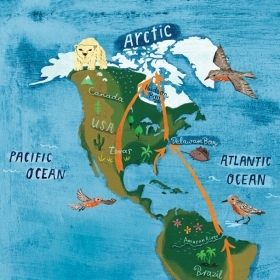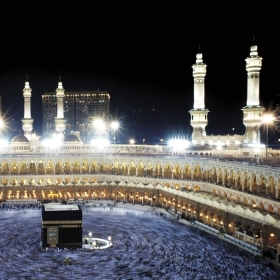I had met Alison in a kitchen just after Burgos. Another traveler began introductions as I turned to walk away. When I spun back, Alison and I nearly collided. She didn’t flinch. Her bleached curls were blinding, cockney jokes quick, tourist photography unabashed. I had decided on a meditative, solitary approach to the Camino de Santiago, the ancient Catholic pilgrimage route turned modern travel adventure across northern Spain. But after Burgos, I started looking for Alison before the grocery store, because maybe she would prefer a certain pasta for dinner.
In the Meseta, two weeks after the Pyrenees and two weeks before the Atlantic, Alison twisted her ankle. She shrugged and boarded a bus, with an eye on a hotel down the road. I committed completely to my routine. Woke before dawn, bandaged my blisters. Walked to the next town for pastry, purchased a baguette and cured meat for picnic lunch. Regreased and rebandaged my feet, continued walking at exactly my own pace. Arrived at the night’s albergue, scrubbed the day’s clothes, drained the new blisters. Napped, shopped for dinner, cooked, crashed. When Alison and I came upon each other again, I let her walk ahead. She was unfairly rested. My Camino had become not just meditative, but rigid, ritualistic solitude.
The Meseta gave way to Galicia. Just after Portomarín, I came upon a medieval town introduced by a length of fence, which supported the requisite greeter. All the ancient towns had ancient people who stood on the road smiling, waving. This town’s was a fat, pockmarked man with bleary eyes. I nodded. He spoke. I couldn’t hear him and stumbled through telling him so. He spoke again, waving me over. I approached. We continued our back and forth of mumbling and misunderstanding. When I reached him, he seized my wrists, turning my forearms out and back. He pressed me against the fence. A few moments later, I had yanked myself away. I wiped the man’s saliva from my lips and nose. I willed myself down the path, faster, into the town.
Like many rural villages on a summer morning, it was empty, still. Just past the main square, on a low wall, sat Alison. When she saw me, she stood. I continued to wipe my face. Alison squinted at me. I reported the last few minutes. She gazed back down the road. She paused, then exhausted the English language’s expletives.
As she cursed, I remembered Alison and I had set out at about the same time that morning. I was walking alone. Alison, though, still considered us linked, walking mates, sisters on the journey. She may have even coordinated her departure to mine. Stuck between stubbornness and gratitude, I gestured to the road in front of us. Generally, on the Camino, if there’s a question of what’s next, the answer is to keep going.
Alison and I walked together until early afternoon, when we hit 16 kilometers and another small town. Most travelers aim for about 25 kilometers a day. “You should go on,” I said.
“What I’m going on about is a lovely dinner and a long sleep,” Alison said, dropping her pack at the albergue’s entrance. We checked in. We tried to grocery shop, but a neighboring festival had closed every establishment and emptied every home. Shouting greeting to passing pilgrims, we waited out the afternoon, something I didn’t quite know how to do, until the hospitalera, a sickly woman, pulled Alison aside.
“Conjunctivitis,” Alison said when she returned. “Poor thing’s off to the doctor and has left us in charge. That’s dinner, apparently.” Alison pointed to a building across the adjoining field.
No one else stopped at the albergue that night. Alison and I sat by the road until the sun pinked, spent too much money at the restaurant, slept deeply in the unlockable building. Rose early, packed quickly, began walking together. Met a mutual challenge to cover 45 kilometers before nightfall. Temporarily adopted a stray kitten, napped by a river, tried an “alternate route,” then conferenced with a cowhand, who redirected us to the opposite mountain.
On our last day, we stood together at the Camino’s absolute end, on the last stones of the peninsula Finisterre. Behind us, a pole strung with international flags and worn socks snapped in the wind. The Atlantic smashed just out of arm’s reach. Together Alison and I gazed into the foggy, churning future, a place even more unpredictable than the land behind us, a place from which we could turn away and find each other, waiting, cursing or laughing, and continuing on.
After the Camino, Kate Erickson ’05 landed in Brooklyn, N.Y., where she was a freelancer for almost eight years. She recently relocated to Los Angeles, where she writes for TV and conspires to return to an open trail.








We ask that those who engage in Wellesley magazine's online community act with honesty, integrity, and respect. (Remember the honor code, alums?) We reserve the right to remove comments by impersonators or comments that are not civil and relevant to the subject at hand. By posting here, you are permitting Wellesley magazine to edit and republish your comment in all media. Please remember that all posts are public.